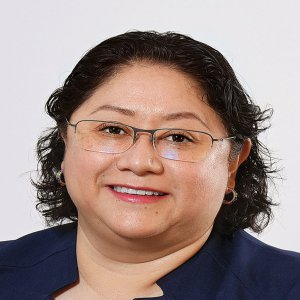Driving Grid Support

STORY INLINE POST
Q: What does Rolls-Royce bring to the table through its Power Systems division in Mexico?
A: This division offers products that conveniently match the country’s current energy mix. Renewables are increasing rapidly and prices are coming down, especially for solar PV technology. The introduction of these systems causes fluctuations into the grid, which is why more fast-reacting engine solutions are needed to support it. Our medium-speed engines can go from zero to full load in three minutes, which matches perfectly with solar generation. As a matter of fact, in September 2018, Rolls-Royce introduced a new engine that offers 20 percent more output, with an electrical efficiency up to 50 percent. This is one of the best-in-class engines and we introduced it to the Americas market in late 2018. Through this fast-reacting technology, the company works closely with two engine product lines in Mexico: Combined Heat Power (CHP) and grid-connected baseload and peaking power plants. The CHP line is the one that we have installed the most globally, mainly in combination with greenhouses or connected to the grid. Baseload and peaking power plants only produce electricity so there is no heat recovery present.
Q: When did the company decide to diversify its portfolio to cover the power segment needs?
A: Rolls-Royce medium speed engines date back to 1855 when the original company Bergen Mekaniske Verksted (BMV) was founded. To date, the company has sold more than 7,000 engines. Our medium-speed gas and liquid fuel engines can be used in a broad range of power applications. These products are characterized by their flexibility, reliability, long-term service agreements, modularity and possibility of partnering for turn-key installations.
Q: What is the company’s strategy to position its technological proposal in the power segment?
A: In Mexico, Rolls-Royce has developed various power plants located in states like Sonora and Queretaro. To date, we are in the process of supporting our existing customers and increasing our client portfolio. We are also focusing on service support through our local personnel. The company also offers remote monitoring support where our experts have remote access to power plants’ parameters with previous permission of our client. Globally, 85 percent of our installed base in the power generation market is covered by Rolls-Royce service agreements, and this is also happening in Mexico. Our latest project encompasses a 20MW power plant located in the port city of Altamira. Together with an EPC and a developer, this project was constructed for Mexichem, the third-largest chemical and petrochemical company in Latin America.
Q: What are the two main goals that the company wants to achieve by the end of 2019?
A: The company aims to fully enter into the baseload and peaker power plants segment as it is an area where we have not yet developed a project in Mexico. Also increasing our CHP customer base remains a priority to position the brand. At the moment, the key for our business development in Mexico relies on developing local support. As of Jan. 1, 2019, we have a Rolls-Royce Mexico service company that will be operated by Bergen Engines. From a regulatory point of view, we would like the government to review how beneficial reciprocating engines are and why they are needed in this energy mix. You cannot rely only on renewables because the technology does not provide constant power. Given the country’s thermal demand and natural gas consumption profile, there will always be a requirement for fast-responding power units and that is our biggest strength.
























